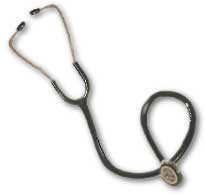I went to search for clues about this technique. My search led me to a traditional clinic in Muscat. It was founded by his Majesty Sultan Qaboos, and it's under the authority of Diwan Affairs. This clinic treats people by Omani traditional methods. In the clinic, there are Omani experts who were trained mostly by their families to use what is available in our environment to treat people. Their families inherited this traditional custom from their ancestors. They carried this tradition from one generation to the next.
I interviewed my uncle who was treated for severe pain in his leg by this custom. Moreover, he is among the group which encourages people to benefit from traditional medicine in Oman.
This burning technique uses a rod made of iron metal about 7 to 8 cm in length. At the tip, it is bent into an L-shape.
First, the patient is examined by an expert in the clinic. After he locates the pain area, he marks it with charcoal. Meanwhile, he heats the iron rod in charcoal fire. After the rod is heated to its maximum temperature, he places it, from its L-shaped end, on the target pain area.
After resting for a few hours in the clinic, the patient is supplied with some traditional herbal medicine that the expert will ask to patient to place on the wounded area. The number of times which a patient needs to use this medication varies. It depends on the type of pain and the severity of the wound.
My uncle told me that he got well after three days. He wishes that he went to the traditional clinic from the beginning. Moreover, his advice for people is to be aware about the consequences involved when seeking treatment from non-experts.
I went further into my search about this custom in Oman. I interviewed by sister. She is a nursing student in her second year. She told me about the enormous number of patients that come hospitals because of this custom. Some people go to the wrong people to seek help. They steal their money and leave them with severe wounds.
The location of the wounds differs. The list goes from head, hand, stomach, and back to legs. These burns are third degree wounds that are very severe. Most of the burns have reached the tissues of the patients. Some of these wounds are extremely severe to the extent that the patient is taken to ICU.
She met some leukemia patients with severe wounds. The problem is their bodies lack powerful immune systems. Their bodies can't resist infections, so they end up with various kinds of infections that make treatment even harder.
On the one hand, it's important for us medical doctors to know about our tradition, [especially] about Omani traditional medicine and how people use it to cure illnesses. Perhaps we as doctors can look forward to gaining international approval of Omani traditional medicine as India and China did.
On the other hand, it's important to [inform] the community of the consequences of bad practice of this custom and how it could lead to serious infections.
I feel that I'm aware of the importance of doing this course (CMED 302) now. Medical staff, not only doctors, must be in close relation with their community. This will be easier if we get into their lives more.

